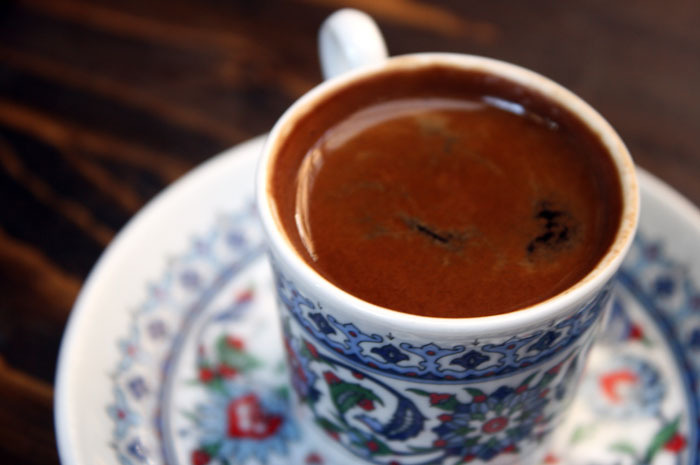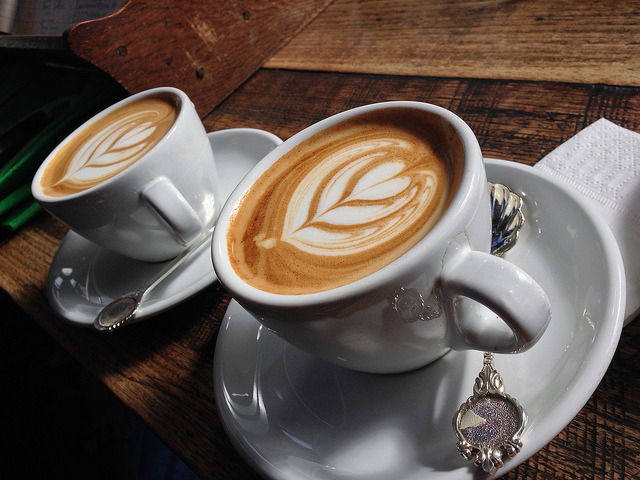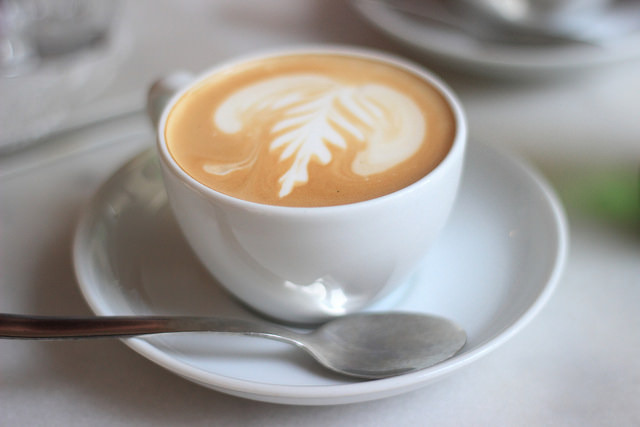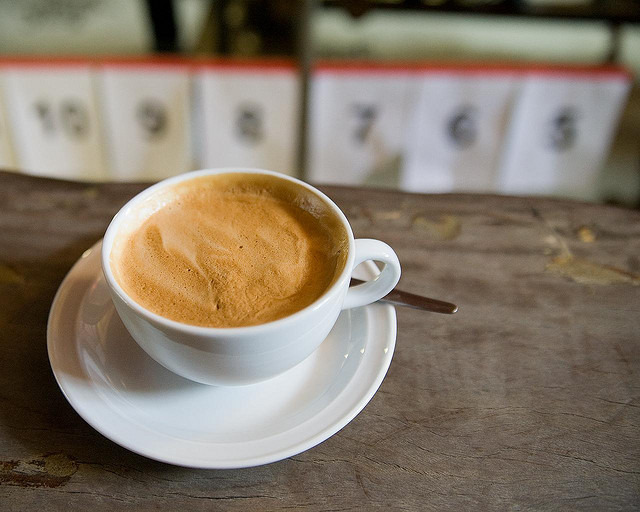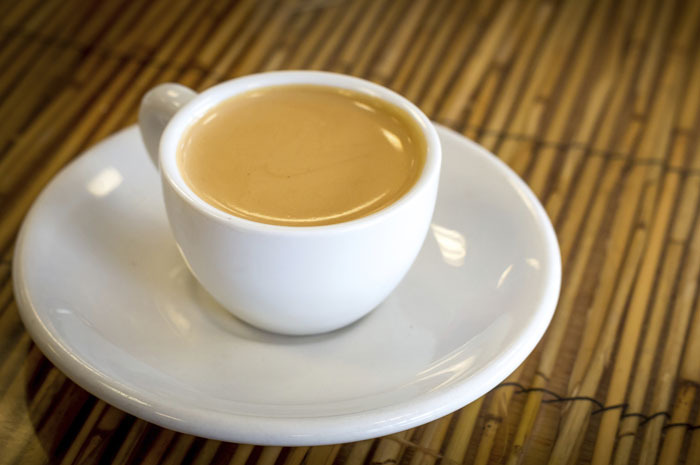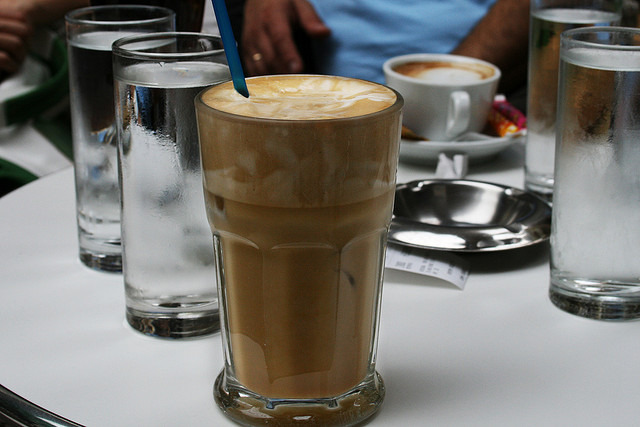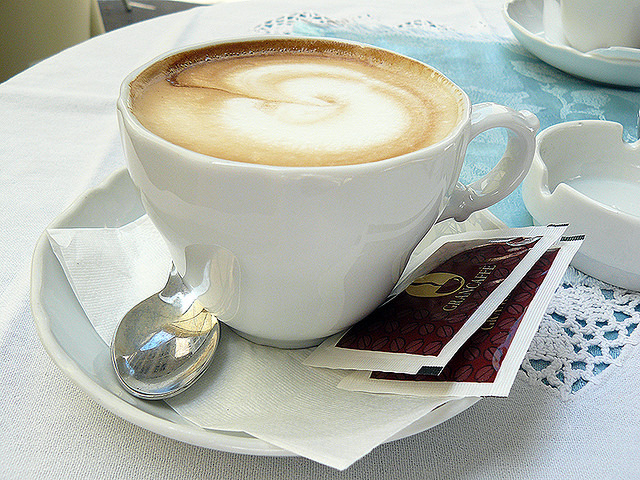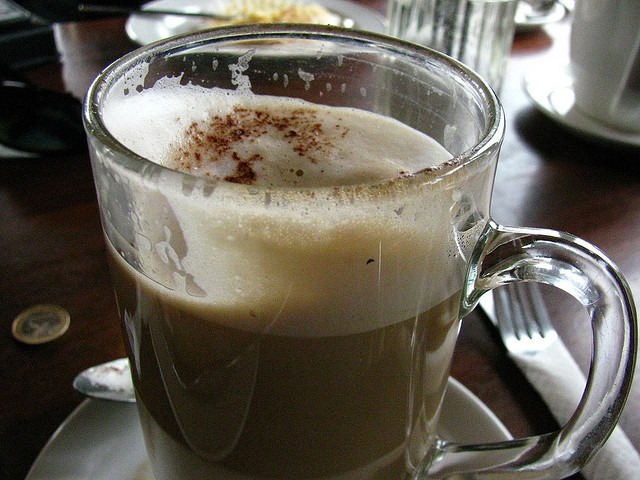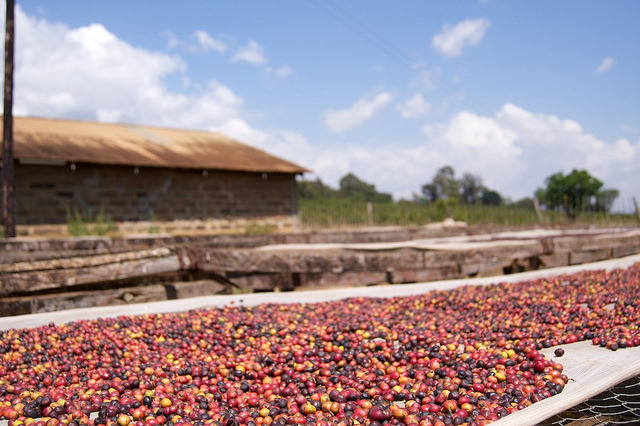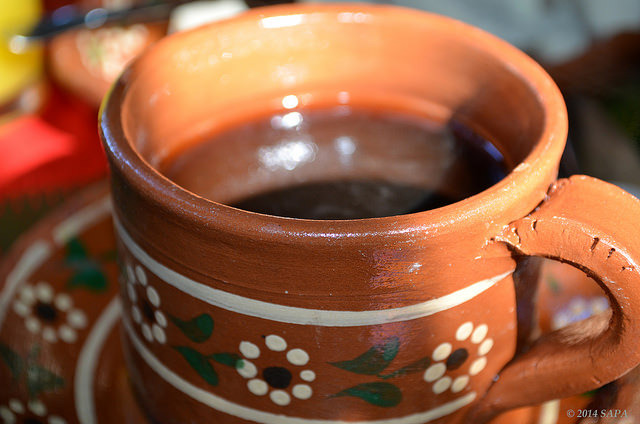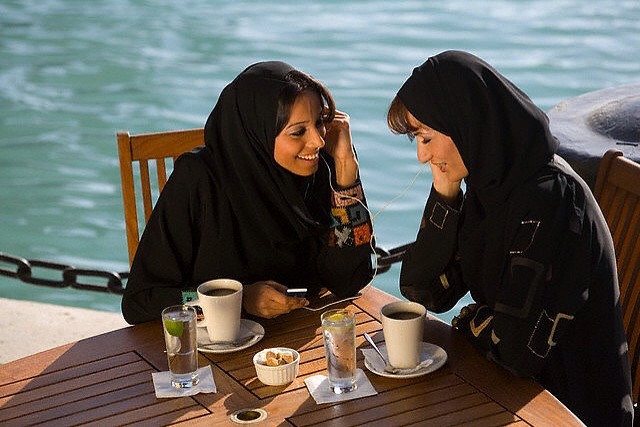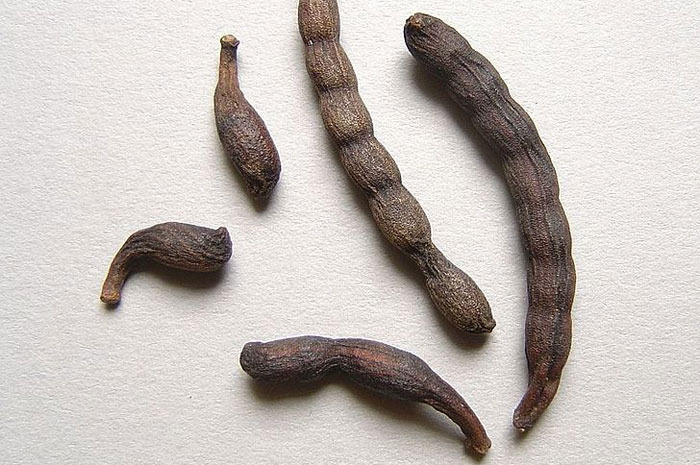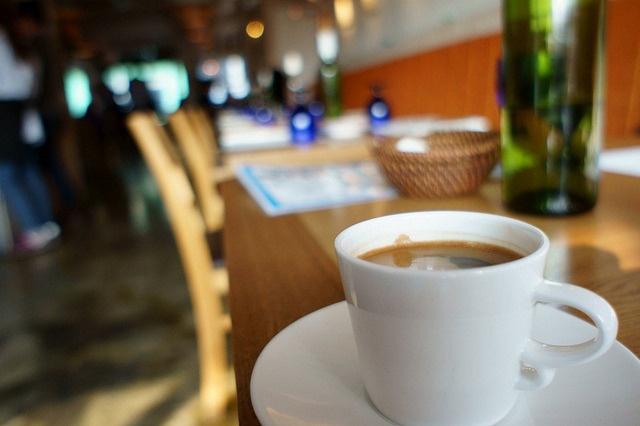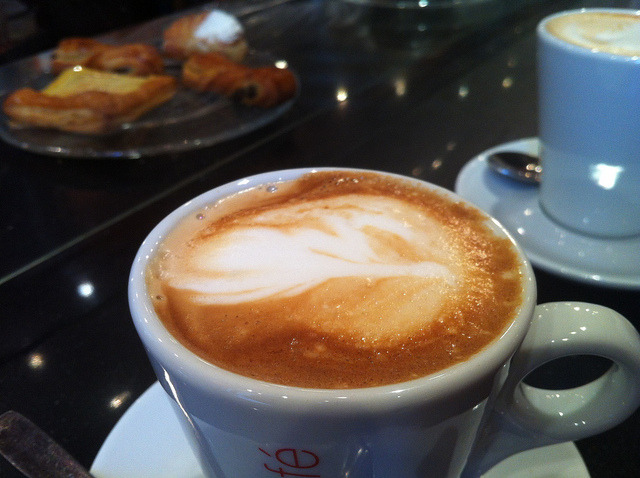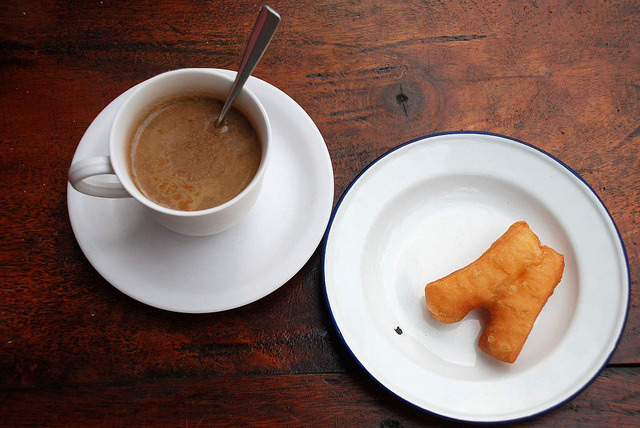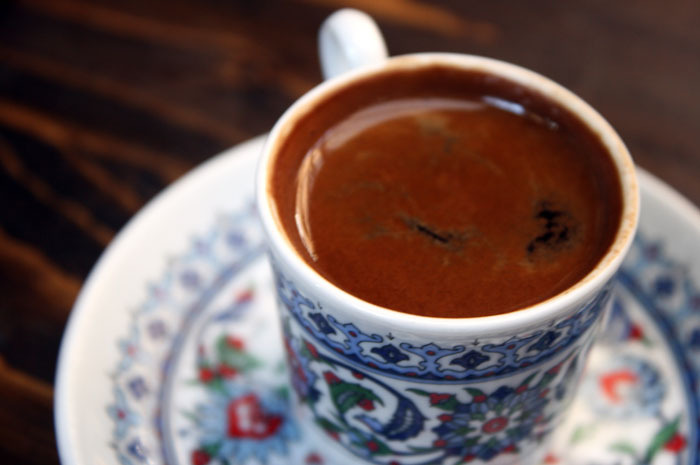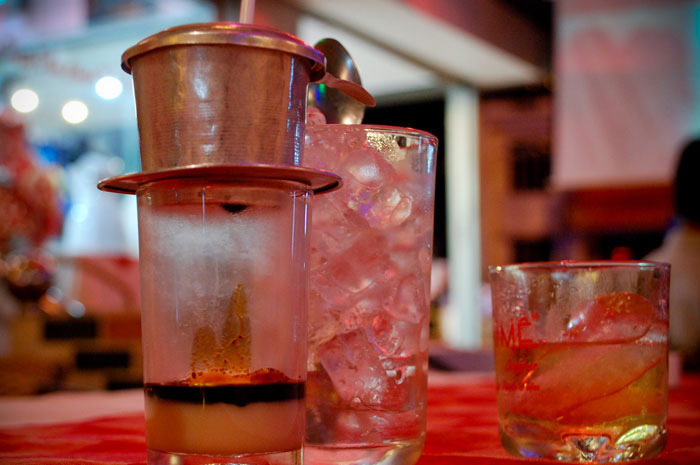How The World Drinks A Cup Of Joe
There are many different ways to order your morning coffee around the world.
Australia
What has long been the rage in Australia has now officially made its way to North America and is being introduced to Starbucks across America and Canada: The flat white. It is said to have originated in Australia in the 1980s, yet the true origin of it is heavily disputed, as New Zealand lays claim to its creation as well (recalling the two countries' ongoing dispute over the origin of the fruit-studded meringue called Pavlova). A flat white calls for either a single or double shot of espresso, milk that is steamed to a smooth texture, and is served in a cappucino cup.
Austria
Wiener Melange is a specialty coffee whose name means "Viennese blend" in German, and it's very similar to a cappuccino. It is customarily served as a double espresso shot, or sometimes a weaker brew, in a large coffee cup that is topped with steaming milk and milk foam. Other versions involved adding an egg yolk topped with two sugars to the double espresso before adding whipped cream.
Brazil
Brazil is practically synonymous with coffee, and is it not only a major coffee-producing country, but it is also a country that loves to drink its coffee, especially what they call the cafezinho, or "little coffee." Brazilians like their cafezinho all day long, so don't be surprised if you find one brought to you at a café without even ordering one. The cafezinho resembles Turkish coffee; it's not as thick, but is just as dark, rich, and sweet. A cafezinho is made by mixing hot water, finely ground finely ground coffee, and sugar, and then straining the mixture through a filter.
Cuba
In Cuba, coffee is a way of life, and the sweet café cubano is the way to go. Café cubano is an espresso that is brewed with sugar and served without any milk. There is one requirement that comes with drinking a café cubano, though: It is meant to be enjoyed in a leisurely way, as are so many things in Cuba.
Greece
In Greece, the most popular coffee is a frappe, and it is strong, sweet, and delicious. The frappe, commonly served over ice, is made with Nescafé instant coffee, cold water, sugar, and milk.
Italy
Coffee is serious business in Italy, especially in Rome, Naples, and Trieste, acknowledged as the three capitals of espresso. There are many different coffee creations and specialties, each with its own name, but most Italians drink a simple shot of espresso, with or without sugar — usually very short, or ristretto. Caffè latte is espresso with steamed milk; cappuccino is espresso with steamed milk with foam (and is considered strictly a breakfast drink; ordering one after dinner marks you as a tourist as surely as asking for parmigiano on your spaghetti with clams). A macchiato is espresso with just a touch of milk foam (macchiare means "to mark").
Ireland
Who doesn't love an Irish coffee? It serves two purposes: to perk you up and give you a buzz. First created in 1940, the Irish coffee was said to have been invented to warm up American tourists visiting the country during the cold winter months (though some sources say it was actually invented in San Francisco). An Irish coffee is made using just a few crucial ingredients: hot coffee, Irish whiskey, sugar, and whipped cream.
Kenya
In Kenya, the most traditional style of coffee, served only to men, is called kahawa chungu, "bitter coffee" in Swahili. Kahawa chungu is brewed over a charcoal stove in tall brass kettles, a method developed in the ancient Arabic world. Today, coffee houses serving kahawa chungu are becoming increasingly popular in Kenya's bigger, modern cities, including Mombasa.
Mexico
In urban environments, Mexicans typically drink espresso, with or without milk. One specialty, though, is café de olla, literally "coffee from the pot," is traditionally prepared in beautifully artisanal clay pots, which give the drink a distinctly warm, earthy flavor. Cinnamon and piloncillo (unrefined cane sugar) are added for that extra kick and to sweeten the drink.
Saudi Arabia
In Saudi Arabia, there are two styles of coffee: Turkish and Saudi, the latter of which is called Al-Qahwa. It is common to serve Al-Qahwa, which is spiced with ample amounts of cardamom (whole seeds or ground) and has a bitter taste, with dates or other dried fruit. The coffee culture in Saudi Arabia calls for traditional etiquette practices, like serving elders at the table first.
Senegal
Café touba is ground coffee is flavored with grains of selim (Guinea pepper) and cloves. The pepper is imported to Senegal from Côte d'Ivoire and Gabon, mixed with other spices, and roasted with the coffee beans, then ground into powder. The drink used to be consumed only during ceremonies and commemorations, but is now widely enjoyed.
South Korea
Koreans chug instant coffee like water throughout the day. Maxim coffee packets are ubiquitous; you simply empty the contents of a packet into the cup and add hot water. Given the size of the packets, these are very small cups of coffee and are usually drunk from a Dixie-like cup you'd find at a dentist's office.
Spain
A straight espresso is called "cafe solo" — lone coffee. A cortado is an espresso cut with a little warm milk ("cortar" in Spanish means "to cut"), similar to the Italy's caffè macchiato. A carajillo is an espresso spiked with a shot of liquor, usually brandy or dry anisette, and despite its alcoholic kick it's often enjoyed in the mornings.
Thailand
In Thailand, you'll find vendors on practically every corner selling iced coffee that won't cost you more than a buck. The coffee in Thailand is brewed strong and is served with condensed milk, though it is not as sweet as its Vietnamese cousin, and often has a bit of chicory brewed in.
Turkey
Turkish coffee is small but packs a punch. Finely ground coffee is boiled in a tiny pot called a cezve (traditionally made from copper) and sweetened with sugar. It's poured straight into a little cup and served hot, though you only drink it after the grounds have settled at the bottom of the cup. The method goes back to the time of the Ottoman Empire.
Vietnam
The Vietnamese like iced coffee, known as cà phê sữa đá, and it's both strong and sweet. The French first brought coffee into Vietnam in the 1800s, but it was adapted to fit the Vietnamese environment. Vietnamese coffee is prepared pour-over style, dripped directly into the cup through a filter. Unlike France's café au lait, Vietnamese coffee used condensed milk instead of fresh milk, which wasn't widely available and was difficult to keep fresh. This helps make it some of the sweetest coffee you'll find.
